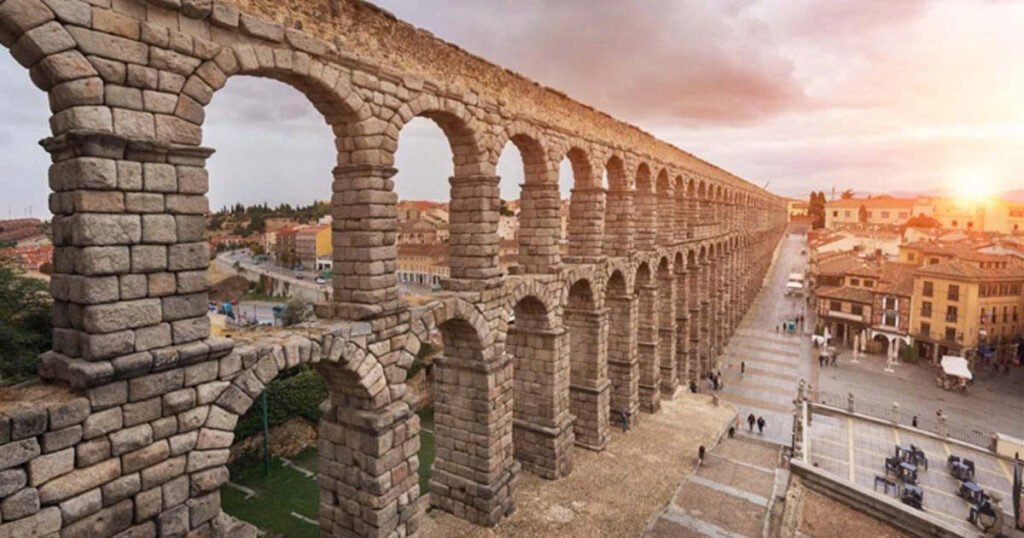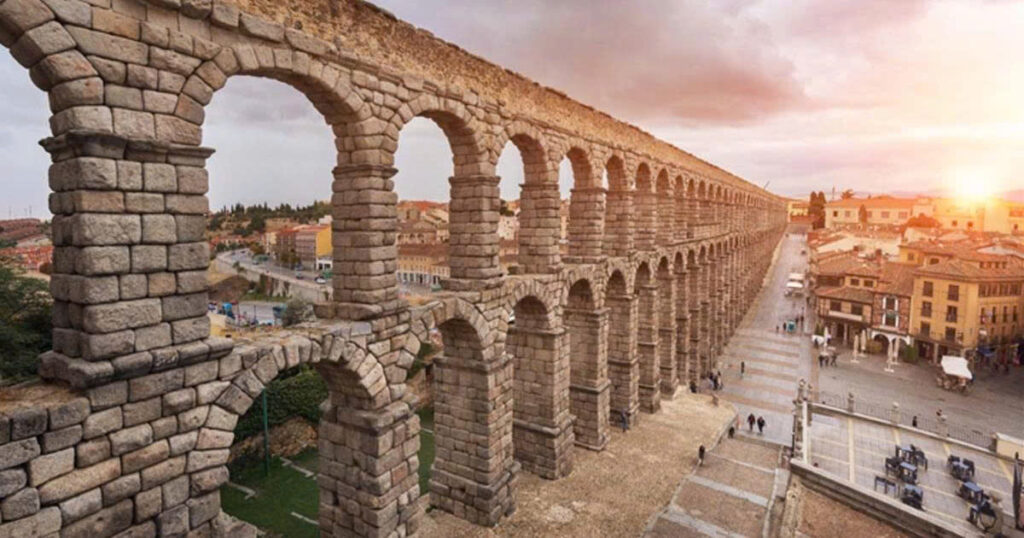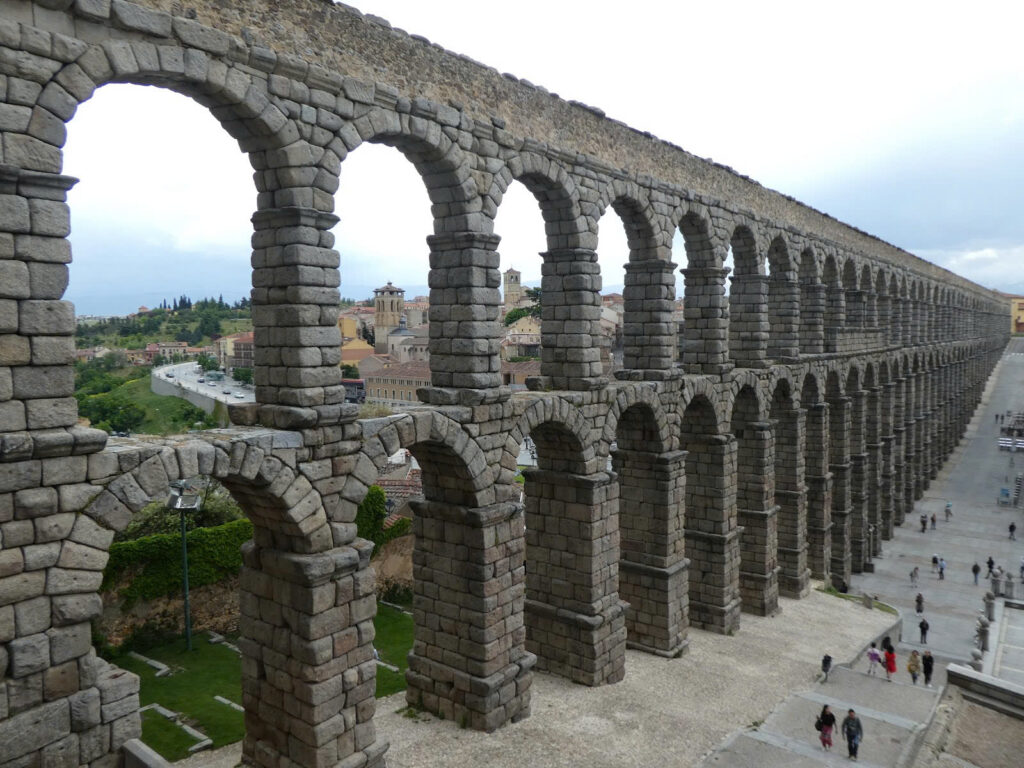A Monument to Ancient Engineering Genius

In the heart of Spain stands a structure that defies time and imagination – the Segovia Aqueduct. This architectural marvel, far from being a creation of modern technology or AI imagery, is a genuine relic of Roman ingenuity that has graced the Spanish landscape for nearly two millennia.
The Aqueduct’s Impressive Stats

Built during Emperor Trajan’s reign (AD 98-117), this colossal structure stretches an astounding 2,388 feet (728 meters). Its 165 arches, each towering over 30 feet (9 meters) high, are composed of roughly 24,000 precisely cut dark Guadarrama granite blocks. What’s truly remarkable? These massive stones fit together perfectly without a drop of mortar.
Roman Engineering at Its Finest

The aqueduct’s design showcases the Romans’ advanced understanding of structural engineering. Its arch system brilliantly distributes weight, allowing it to span great distances while maintaining rock-solid stability. This innovative approach not only ensured the aqueduct’s functionality but also its longevity.
A Vital Link in Ancient Urban Planning

More than just an impressive monument, the Segovia Aqueduct played a crucial role in the city’s development. By channeling water from the Frío River to Segovia, it improved public health and sanitation, setting the stage for urban growth and enhancing the quality of life for countless inhabitants.
From Ancient Wonder to Modern Icon
A UNESCO Treasure

Today, the Segovia Aqueduct stands proud as a UNESCO World Heritage site, drawing visitors from across the globe. Its enduring presence serves as a tangible link to our past, offering insights into Roman civilization and its lasting impact on urban planning and engineering.
Symbol of a City, Testament to Human Achievement
The aqueduct has become more than just a historical artifact; it’s the very symbol of Segovia itself. Its well-preserved state after nearly 2,000 years is a testament to the skill of ancient Roman builders and a powerful reminder of human ingenuity and resourcefulness.

As we gaze upon the Segovia Aqueduct today, we’re not just seeing an old structure – we’re witnessing a timeless blend of art and engineering that continues to inspire and amaze. It stands as a monument to human achievement, bridging the past and present, and ensuring that the legacy of Roman engineering lives on for generations to come.

